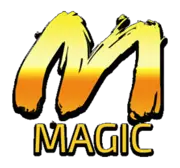I want to take you on a little journey…back in time.
Thousands of years ago, in the remote corners of ancient India,
sages would gather at sunrise.
They’d sit quietly, cross-legged, the early morning mist swirling around them.
But what were they doing?
They weren’t planning great battles or discussing kingdom politics.
No, they were chanting.
But why?
What did they know that we don’t?
What if I told you those ancient chants…
What we now call mantras…
Have been quietly shaping the world for thousands of years?
These weren’t just sounds.
They were sacred words, believed to hold the power to unlock the mind,
to invite prosperity, focus, and abundance into one’s life.
And here’s where it gets really interesting…
Today, these same mantras are being whispered (or chanted)
by some of the world’s most successful people.
It’s easy to imagine these mantras fading into the background of history,
forgotten in dusty temples.
But they didn’t.
Today, people like Oprah Winfrey, Ray Dalio, and Kobe Bryant
use these sacred words to tap into something powerful…
Focus, clarity, and even wealth.
Oprah, for example, has long credited her mantra practice with keeping her grounded in life’s chaos.
She practices Transcendental Meditation, repeating a personal mantra twice daily.
For her, these mantras are more than just words—they are anchors,
helping her stay calm, clear, and open to the universe’s abundance.
It’s no wonder she’s built an empire.
Ray Dalio, one of the world’s richest hedge fund managers, also uses mantras.
He’s said that his practice of Transcendental Meditation, using a mantra to clear his mind,
is “the single biggest ingredient” to his success.
From Focus to Fortune: Mantras for Wealth
What if these ancient mantras could help with something we all crave—financial abundance?
It might sound strange.
But think of mantras as a direct line to rewiring the mind for prosperity.
In ancient India, mantras like those dedicated to Lakshmi, the goddess of wealth,
were chanted to attract prosperity and success.
One of the most famous ones is:
“Om Shreem Mahalakshmiyei Namaha”
This isn’t just a string of pretty words.
This mantra is believed to align you with the energy of wealth and abundance.
Even today, many people use this mantra to invite financial opportunities into their lives.
And if you think this ancient practice doesn’t have a place in modern life, think again.
The principles behind money mantras are as relevant today as they were back then.
Why Should You Care About Money Mantras?
Here’s the thing…
We all have mental blocks around money.
Maybe you’ve been told that wealth is hard to come by,
or that abundance isn’t for everyone.
These beliefs sit deep in your subconscious, affecting your relationship with money.
That’s where money mantras come in.
Mantras help reprogram the subconscious mind,
shifting you from a scarcity mindset to one of abundance.
When you repeat mantras like:
“I am open to receiving financial abundance.”
“Money flows to me easily and effortlessly.”
You’re essentially telling your brain a new story—one that opens doors
to opportunities, success, and, yes, wealth.
How to Use Money Mantras
Want to give it a try?
Start by choosing a mantra that resonates with your financial goals.
It could be as simple as:
“I attract wealth in unexpected ways.”
“I am aligned with the energy of abundance.”
Here’s the secret: Repetition.
Just like those ancient sages who chanted their mantras every day,
you need to make your mantra practice consistent.
Say it when you wake up, during quiet moments in your day, or before going to bed.
The more you repeat it, the more your mind will align with that energy.
But don’t just take my word for it.
Test it for yourself.
What have you got to lose?
Only your limiting beliefs.
What Happens Next?
So here’s my question for you:
Are you ready to use an ancient tool to invite modern abundance?
Mantras are more than just words… they’re pathways to success.
Let me know what mantra you’ll choose to start your wealth journey.
Drop it in the comments below.
The key to prosperity is already in your hands.
Now, it’s time to use it.


